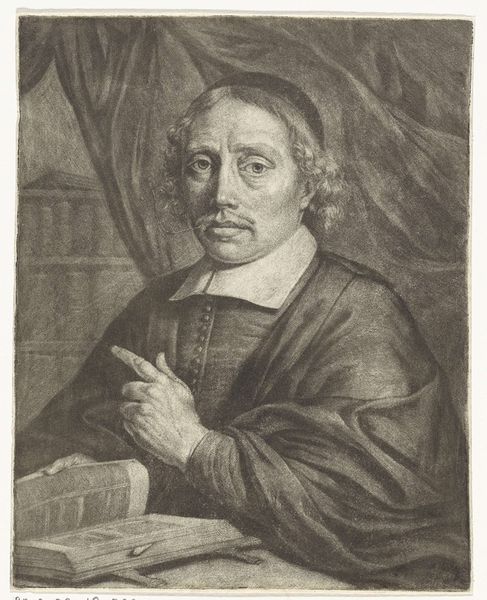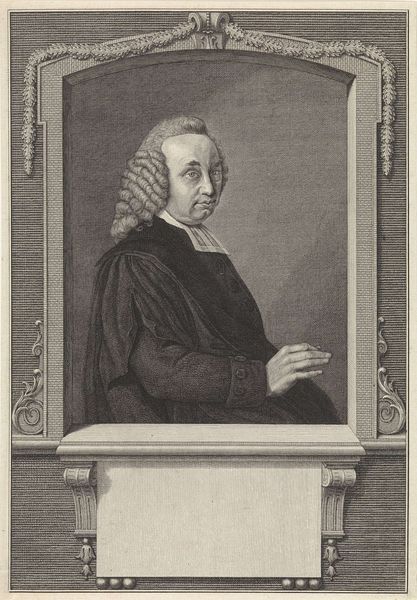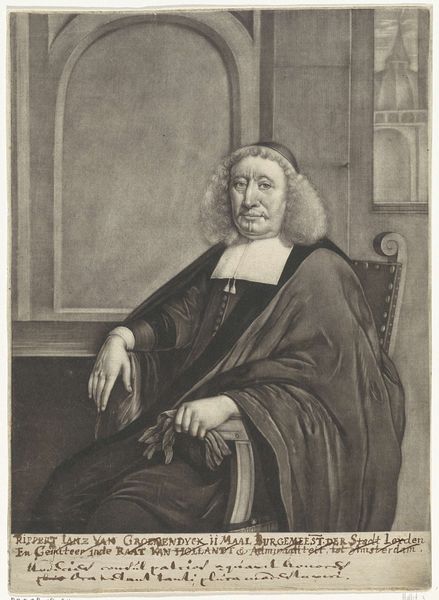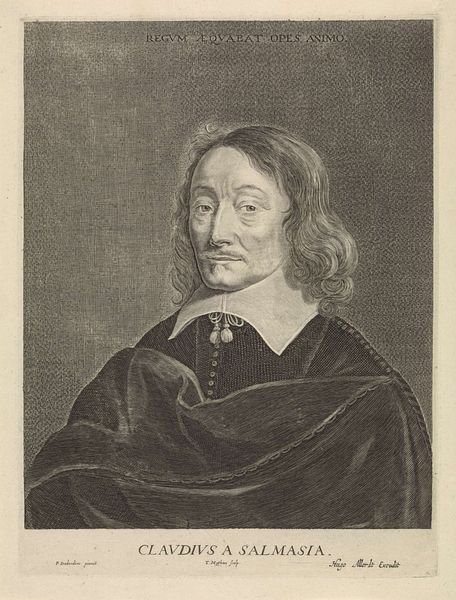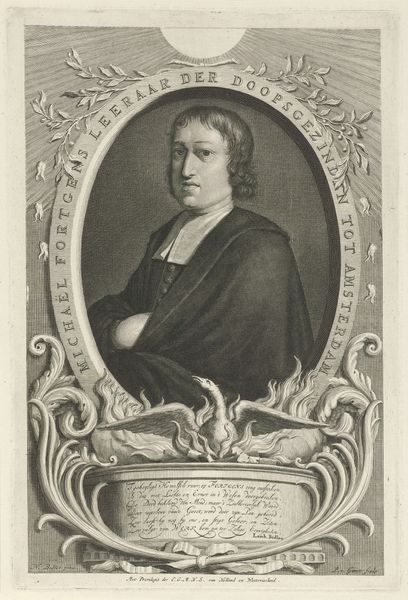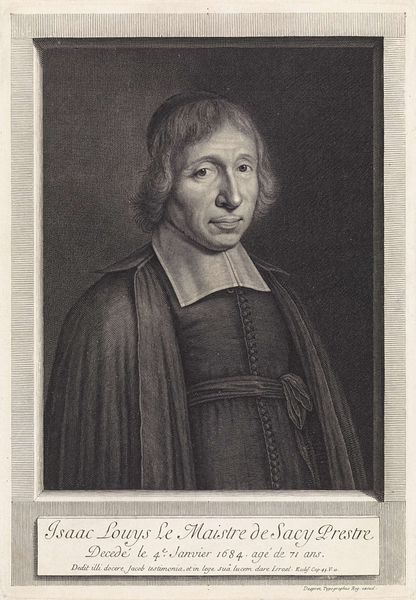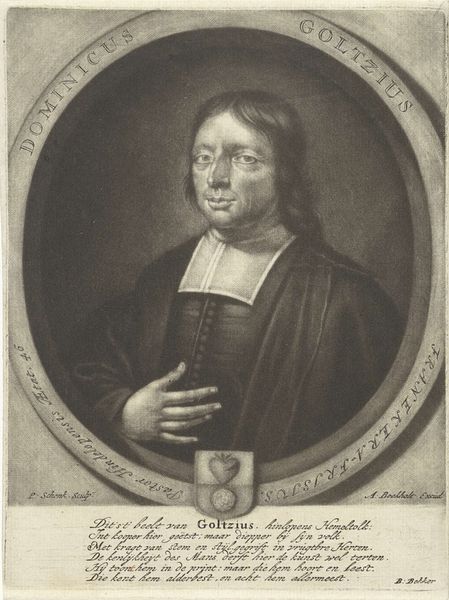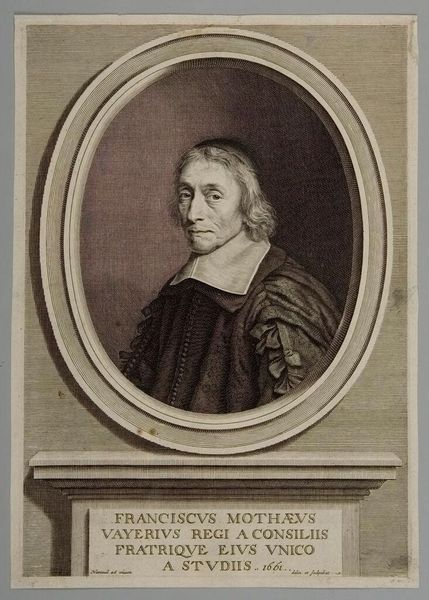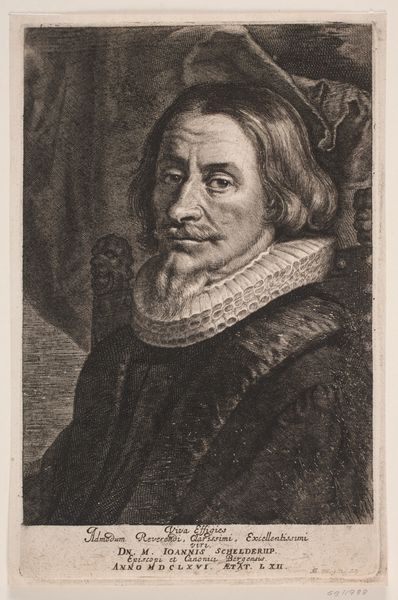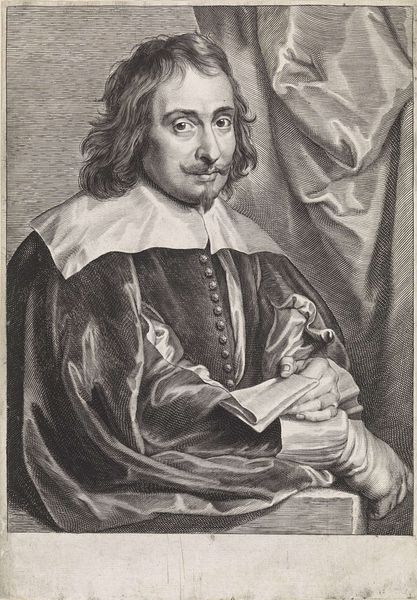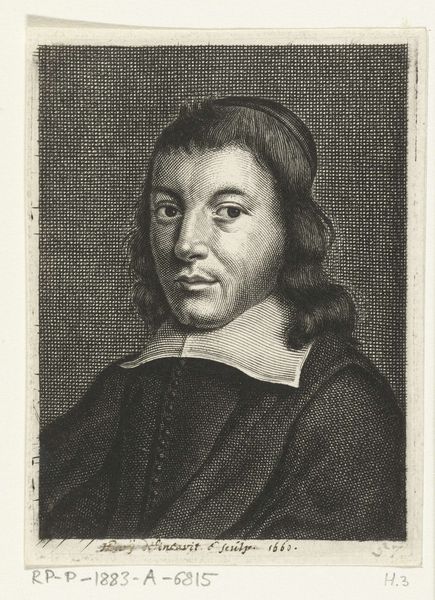
print, engraving
#
portrait
#
baroque
# print
#
book
#
historical photography
#
history-painting
#
engraving
Dimensions: height 241 mm, width 185 mm
Copyright: Rijks Museum: Open Domain
Editor: Here we have Wallerant Vaillant's "Portret van Conradus Hoppe," created sometime between 1658 and 1677. It’s an engraving, a print. It strikes me as very formal, almost austere, even with the flowing drapery in the background. What symbolic meanings or societal roles do you see reflected in this portrait? Curator: I see layers of coded meaning. The book, the somber dress, his composed expression – they aren't just documenting his likeness. Vaillant is intentionally constructing an image of Conradus Hoppe as a man of faith and intellect, likely reinforcing cultural memory and his significance within his community. Note the phrase "Dienaer des Evangeliums" inscribed; minister of the gospel. It connects directly to the Augsburg Confession—a pivotal document of Lutheranism. Editor: So, it's like he’s crafting an identity to be remembered? How effective do you think it is? Curator: Precisely. And very effective for its time! Consider the use of *symbols.* It is as if the artist wanted to create the impression of piety and faithfulness through specific visual cues, ensuring a specific legacy within his cultural milieu. Even his age "Aetat 48", being recorded points towards memorializing a life. Do you notice other compositional choices reinforcing this message? Editor: Yes, his gaze seems very direct, confronting even. And he's not ostentatiously wealthy, but respectable and learned, a clear visual communication for the intended audience. Curator: Indeed. The image then becomes more than just a portrait. It acts as a point of cultural memory. I now notice that light strategically illuminates Hoppe's face and the book but shrouds the background in shadow, accentuating these important symbols, leading our eye toward deeper contemplation. What are your thoughts on that decision? Editor: I didn’t initially pick up on the meaning of all those symbols. It makes me wonder about the silent language art uses to communicate values across time and generations. Curator: Exactly! Each image and pose creates narratives, and as you observed, those communicate specific ideas of personal virtue, honor, cultural ideals, and spiritual continuity. It is the way we connect the past and the present. Editor: This was a reminder that there are countless historical context that can significantly changes our perspectives on even very simple looking portraits!
Comments
No comments
Be the first to comment and join the conversation on the ultimate creative platform.
